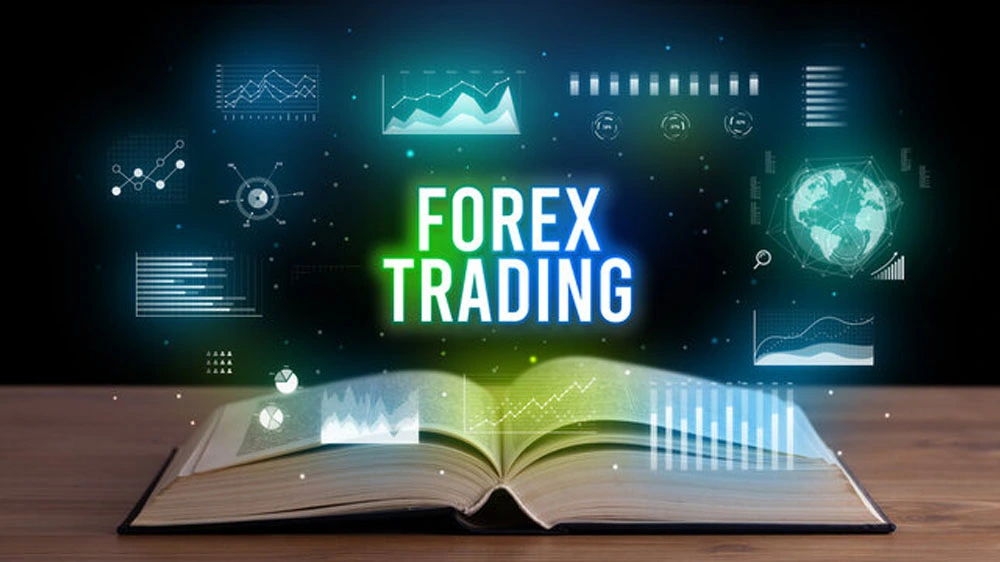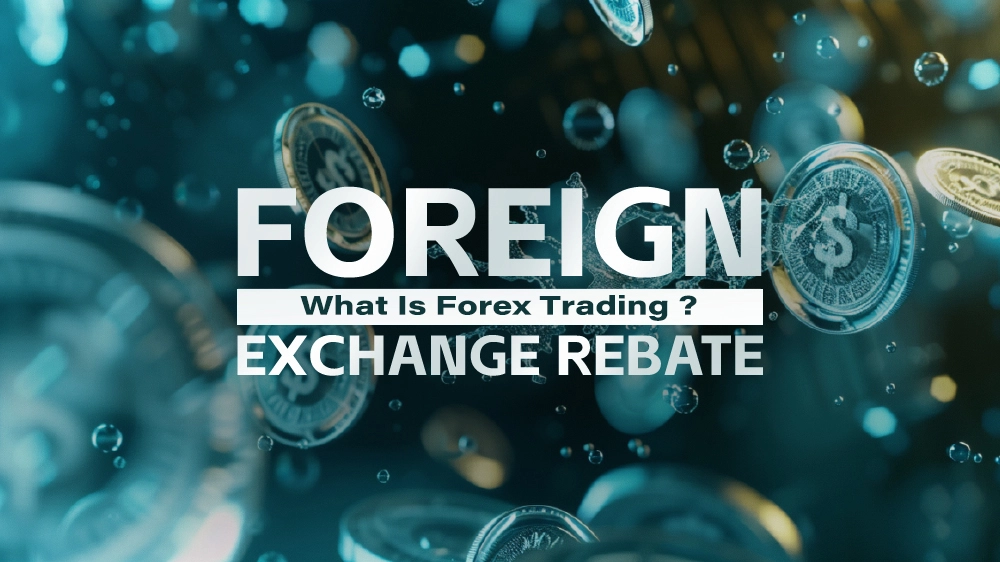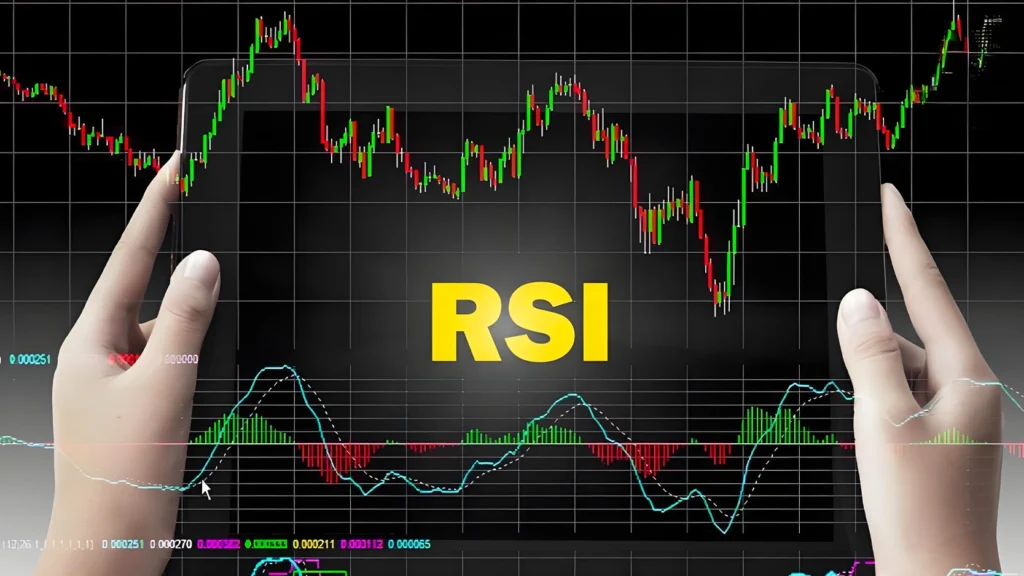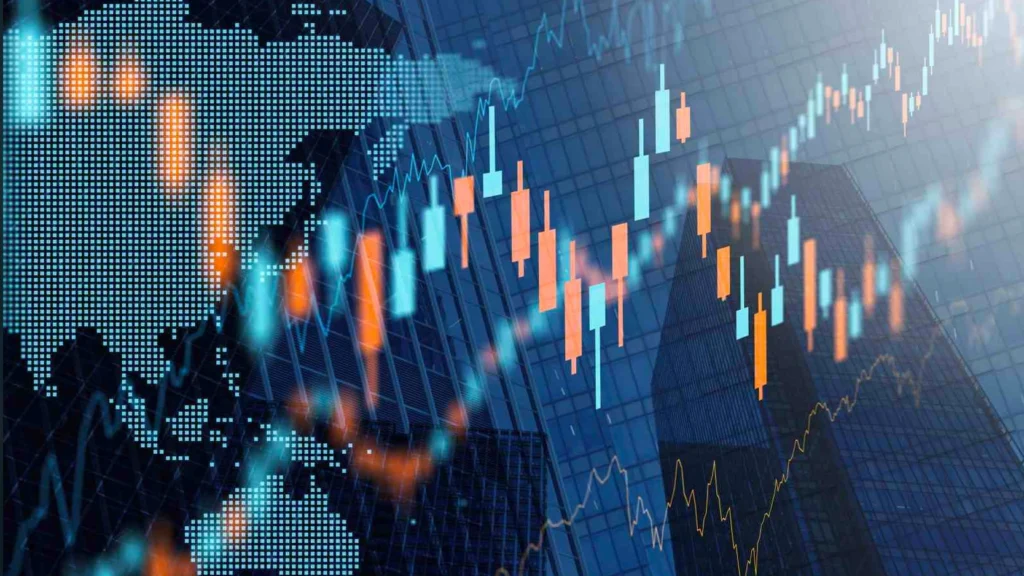What Is Forex Trading? Why Choose Forex Trading?
What Is Forex (FX) Trading?
In simple terms, forex trading is the act of exchanging one currency for another. It is similar to exchanging your home currency for the local currency when traveling abroad, essentially a form of forex transaction. In the forex market, when a trader buys one currency, they must simultaneously sell another. This simultaneous buying and selling of two currencies forms the most basic type of transaction in the forex market.
More specifically, “margin forex trading” combines the concepts of forex trading and margin trading. Margin trading allows traders to control a larger notional position with a relatively small amount of capital. This combination lowers the barrier to entry for forex trading and attracts a wide range of market participants.
In the forex market, currencies are always quoted in pairs, known as “currency pairs”. Each currency pair consists of two currencies: the first is the “base currency”, and the second is the “quote currency”. For example, in the EUR/USD (euro/US dollar) pair, the euro is the base currency and the US dollar is the quoted currency. The quote generally indicates how much of the quote currency is needed to exchange for one unit of the base currency. This paired format is the trading unit in the forex market, clearly defining both the subject and value of the transaction.
Related Recommendation: How to Differentiate and Trade Major and Minor Currency Pairs in the Forex Market? How to Trade?
What makes the forex market unique is its status as the largest and most liquid financial market in the world. The immense daily trading volume ensures rapid execution of transactions. Market participants are diverse, including commercial institutions, investment banks, hedge funds, governments, and private investors. Together, these varied participants provide ample liquidity and abundant investment opportunities in the market.
Profit and Loss Mechanism in Forex Trading: Exchange Rate Gains and Losses and Overnight Interest
In forex trading, profits and losses mainly arise from two mechanisms: “exchange rate gains and losses” and “overnight interest”.
Related Recommendation: What Exactly Is Overnight Interest in Forex Trading?
“Exchange gain/loss” refers to the profit or loss directly resulting from currency value fluctuations. When a trader buys a currency and its relative value rises, selling it later can generate a profit; conversely, if the value falls, it may result in a loss. For example, if a trader buys US dollars at an exchange rate of 1 USD to 100 JPY, and later sells when the rate rises to 1 USD to 101 JPY, they would gain 1 JPY. This type of gain or loss is the most straightforward source of profit or loss in forex trading.
In addition to exchange gains and losses, holding a position overnight may also generate “overnight interest” (rollover or swap). Overnight interest is calculated based on the interest rate differential between the two currencies in the trade. If a trader holds a high-interest-rate currency and sells a low-interest-rate currency, they may earn overnight interest; conversely, they may need to pay interest. This interest can be viewed as the “financing cost” or “interest income” of holding a position. By explaining these two main profit and loss mechanisms early in the article, the article presents an objective and comprehensive perspective, which is essential for a descriptive and non-advisory financial report. This approach can effectively prevent beginners from harboring misconceptions about “easy profits” in forex trading while helping them build more realistic market expectations.
Why Choose Forex Trading?
Forex trading attracts a wide range of participants due to its unique set of advantages.
Leverage: The Potential to Amplify Gains with Small Capital
“Leverage” is one of the core features of forex trading. It allows traders to control a position with a notional value far greater than their invested capital by using a relatively small margin. This mechanism gives traders the potential to use small capital to pursue larger gains, enabling even those with limited funds to participate in the vast global financial markets. Leverage is your tool for amplifying gains with small capital, your multiplier for capital efficiency, and your ticket to entering the global market. Through this mechanism, traders can magnify potential profits, but they must also be mindful of its equal capacity to magnify risks. By presenting leverage as an advantage while subtly hinting at its inherent risks, the article sets the stage for the later discussion on “the double-edged nature of leverage”. This approach not only reflects an objective and balanced narrative style but also provides readers with a more comprehensive foundation for understanding.
Low Trading Costs and High Market Liquidity
Another notable advantage of forex trading is its relatively low transaction cost. Unlike many other financial products, forex trading generally does not charge additional transaction fees. Its main cost lies in the “spread”, which is the small difference between the buy price (Ask price) and the sell price (Bid price). This makes forex a relatively low-cost entry option. In addition, the forex market is renowned for its “high liquidity”. High liquidity means trades can be executed quickly and efficiently, reducing the potential impact of “slippage” caused by market fluctuations. Light on costs and flowing like water, these two features together enhance the efficiency and appeal of forex trading. Emphasizing “low cost” and “high liquidity” directly addresses beginners’ practical concerns, making forex trading appear more accessible and efficient. This pragmatic presentation of information not only increases the educational value of the article but also indirectly lowers the perceived entry barrier for readers.
Related Recommendation: What Are Liquidity and Volatility, and How to Navigate Market Movements?
Two-Way Trading: Opportunities in Both Rising and Falling Markets
The forex market offers the flexibility of “two-way trading”, meaning traders have potential profit opportunities whether they expect currency prices to rise or fall. When anticipating an exchange rate increase, traders can “go long” (buy) to profit, and when expecting a decline, they can “go short” (sell) to profit. This ability to trade in both directions allows traders to seek opportunities in both bull markets (upward price trends) and bear markets (downward price trends). Highlighting “two-way trading” underscores a key distinction between the forex market and traditional one-way investments (such as stocks), showcasing its diversity and broad opportunities, and expanding beginners’ understanding of the market’s potential.
A 24-Hour Nonstop Global Market
The global nature of the forex market enables trading to take place 24 hours. Trading hours span the overlapping sessions of major markets in Asia, Europe, and North America, offering great convenience to traders worldwide. Regardless of location or schedule, traders can flexibly choose the trading hours that best suit them and participate in the flow of global currencies. This round-the-clock market accessibility allows forex trading to accommodate diverse lifestyles and time zone needs, thereby attracting a wider range of potential participants.
Related Recommendation: What Are the Secrets of Global Forex Trading Sessions and How to Master Them?
Understanding the Risks: Challenges and Responses in Forex Trading
While forex trading offers many advantages, every financial market comes with its own risks. For beginners, clearly recognizing and understanding these risks is the foundation of responsible market participation.
The Double-Edged Nature of Leverage: A Magnifier of Gains and Losses
As discussed earlier, leverage can amplify potential gains, but it is also a “double-edged sword” that magnifies potential losses to the same degree. This means that even small market fluctuations can lead to rapid capital growth or sharp declines under the influence of leverage. Therefore, for traders, it is crucial to operate within a level of risk they can tolerate. Newcomers in particular should pay close attention to controlling the leverage ratio to avoid losses that exceed their capacity due to excessive leverage. By using the “double-edged sword” metaphor, the article vividly conveys the dual nature of leverage, making its warning more profound and memorable. This direct and illustrative language helps beginners better grasp the potential dangers of leverage.
Market Volatility and Unpredictability
The forex market is characterized by sharp price fluctuations and is difficult to predict with complete accuracy, primarily due to the influence of multiple factors such as global political and economic events, national interest rate policies, stock market performance, and macroeconomic data. The complex interplay of these factors makes market movements highly variable. Therefore, traders must recognize that forex trading “does not guarantee principal or returns”. In some cases, the market may even experience “gapping”, where the opening price significantly jumps from the previous day’s closing price, often occurring after the release of major economic data or news. Such sudden gaps can prevent orders from being executed at the expected price, further increasing trading uncertainty. Highlighting the market’s volatility and unpredictability helps manage beginners’ expectations and reinforces the reality that “principal and returns are not guaranteed”, thereby avoiding a false sense of security.
The Golden Rule of Risk Management and Capital Allocation
Given the inherent risks of the forex market, effective risk management and capital allocation are of paramount importance and can be regarded as the “golden rule” of trading. First and foremost, traders must clearly define and strictly adhere to the principle of “trading within the level of risk they can tolerate”. For beginners new to forex, it is advisable to start with “micro lots” (smaller trade sizes). This approach can effectively reduce risks in the early stages and provide a relatively safe environment for gaining trading experience.
In addition, creating a detailed “trading plan” is the cornerstone of successful trading. This plan should serve as the navigator’s chart, guiding the trading direction and incorporating the following key elements:
- Set Trading Goals: Clearly define the desired return objectives, such as a specific monthly or annual percentage gain.
- Risk Management and Capital Management: Determine the maximum acceptable loss for each trade and set clear “Stop-Loss” (Stop Order) points to limit potential losses. At the same time, set “take-profit” (Limit Order) targets to lock in realized gains. Capital management involves controlling the proportion of funds allocated to each trade to avoid significant losses from a single mistake.
- Entry and Exit Strategies: Define clear conditions for entering and exiting trades to avoid trading arbitrarily.
While a trading plan should be disciplined, the market changes rapidly, so it is important to maintain a degree of flexibility and adjust strategies when trends turn unfavorable. Elevating “risk management” to the status of a “golden rule” through the use of such powerful wording significantly reinforces its importance in the reader’s mind. At the same time, practical suggestions such as starting with small amounts of capital, setting stop-loss and take-profit levels provide beginners with actionable guidance, empowering them to take control of their trades.
Forex Trading Beginner’s Guide: From Theory to Practice
The process of entering forex trading, from theoretical learning to practical application, can be seen as a gradual “three-step journey”.
Three Steps for Beginners: Learn, Practice, Trade
Step One: Learn the fundamentals of forex. Before entering the forex market, it is essential to gain an in-depth understanding of its basic operating principles, professional terminology, and the fundamentals of technical analysis. As Confucius said, “Act according to your position”, mastering the basics is the foundation for establishing a solid foothold in the market. This knowledge will lay the groundwork for your trading decisions and help you better understand market dynamics and logic.
Step Two: Gain experience through demo trading. Before committing real funds, making full use of a demo account is an essential step. A demo account provides a “risk-free environment” where you can trade with virtual funds, ensuring that even if you make mistakes, no actual financial loss will occur. Through demo trading, you can become familiar with the features and interfaces of different trading platforms (such as MT4 or MT5), learn how to place orders, set stop-loss and take-profit targets, and view charts and technical indicators. It is an excellent opportunity to test various trading strategies and improve your trading skills. A demo account serves as a critical bridge between theoretical knowledge and practical application, as well as an important space to develop trading psychology and discipline.
Step Three: Trade forex with real funds. Once you feel confident in demo trading and have mastered basic operations and risk control, you may consider entering the market with actual capital. At this stage, it is strongly recommended to start with a “small amount of capital”. This approach can effectively reduce risks in the initial phase and allow you to gradually adapt to real market volatility and the associated psychological pressures.
Quick Reference to Core Forex Trading Terms
To quickly grasp the key concepts in forex trading, here is a compiled list of core terms:
| Term | Brief Definition |
| Bid Price | The price at which the quote provider is willing to buy; the price at which the client sells. |
| Ask Price | The price at which the quote provider is willing to sell; the price at which the client buys. |
| Base Currency | The first currency in a currency pair. The quote shows how much of the other currency equals one unit of the base currency. |
| Quote Currency | The second currency in a currency pair, used to express the price of the base currency. |
| Pips | The smallest unit of price movement in forex trading, which varies for different currency pairs. |
| Spread | The difference between the bid price and the ask price of a product, representing the main trading cost. |
| Leverage | Allows traders to trade a notional value far greater than their deposited capital by using a specified multiple. |
| Margin | The funds a trader must provide to open a trade. |
| Rollover/Swap | Interest paid or earned for holding a position overnight, calculated based on the interest rate differential between currencies. |
| Limit Order | An order to buy or sell a product at a specific price better than the current market price. |
| Stop Order | An order to buy or sell a product at a specific price better than the current market price, used to limit losses. |
| Bull Market | A trend of rising prices or a sustained upward movement. |
| Bear Market | A trend of falling prices or a sustained downward movement. |
| Technical Analysis | The study of past price charts to identify clues for future price movements. |
| Fundamentals | Analysis based on underlying fundamental economic factors. |
| Liquidity | The ease with which a product can be converted into cash and the level of market activity. |
| Margin Call | A situation where a trader’s funds are insufficient to maintain open positions, requiring additional funds to be deposited. |
| Gap/Gapping | A sharp jump in market price with no trading in between, often occurring after news releases. |
Common Trading Tools and Concepts Explained
After mastering the basic terminology of forex trading, gaining a deeper understanding of commonly used trading tools and concepts is essential for practical application.
Margin Calculation and Leverage Application Explained
“Margin” is the capital a trader must provide to open and maintain a trading position. The use of leverage directly affects the amount of margin required as well as the potential scale of profits and losses. For example, with leverage of 100:1, only 1% of the trade value is needed as margin. However, when the market moves unfavorably and the account’s net equity falls below the maintenance margin requirement, the broker may issue a “margin call”. If additional funds are not provided in time, positions may be forcibly closed. This underscores the importance of understanding the relationship between margin and leverage.
Order Types
In forex trading, understanding different order types helps traders execute strategies more precisely:
- Market Order: An order to buy or sell immediately at the best available market price.
- Limit Order: An order set at a specific price better than the current market price, executed only when the market reaches that price. Commonly used to set profit targets.
- Stop Order: An order set at a specific price worse than the current market price, executed when the market reaches that price. Primarily used to limit potential losses.
Basics of Technical Analysis: Chart Patterns and Indicators
“Technical analysis” involves studying historical price charts to identify clues about future price movements. It operates on the assumption that history tends to repeat itself, using chart patterns and various indicators to identify trends, support and resistance levels, and potential entry and exit points.
Below are some common technical indicators and their applications:
| Indicator Name | Brief Description | Application Scenario |
| Moving Average (MA) | The arithmetic average of a set of prices over a specific number of past days. | Used to determine trend direction and identify support and resistance levels. |
| Relative Strength Index (RSI) | Measures the speed and magnitude of price movements to determine overbought or oversold conditions. | Used to gauge market sentiment and identify potential reversal points. |
| Bollinger Bands | Consist of a moving average and two standard deviation lines, measuring the range of volatility. | Used to assess price volatility ranges and identify overbought or oversold conditions. |
| Trend Line | A straight line connecting price highs or lows, used to identify market trends. | Used to confirm trend direction and strength. |
| Support | A lower price level that prevents further declines. | Used to identify potential buying opportunities. |
| Resistance | A higher price level that prevents further rises. | Used to identify potential selling opportunities. |
Create Your Own Trading Plan
A detailed and well-structured “trading plan” is the cornerstone of successful forex trading. Like a navigator’s chart on the open sea, it guides traders in the right direction and prevents blind, random actions. This plan should be your personal blueprint and include the following core elements:
- Set Trading Goals: Clearly define what you aim to achieve from trading, such as setting monthly or annual return targets. These goals should be specific and measurable, providing direction for your trading strategy.
- Risk Management and Capital Management: This is a critical part of the plan. You need to determine the level of risk you can tolerate for each trade and set clear “stop-loss” and “take-profit” targets. Capital management involves controlling the proportion of funds allocated to each trade to avoid large losses from a single mistake.
- Entry and Exit Strategies: Define clear conditions for entering and exiting trades, based on your analysis and judgment rather than impulse.
Developing a trading plan is not just an exercise on paper, but a demonstration of discipline. Once established, it should be strictly followed and not altered arbitrarily due to short-term market fluctuations. However, the market is never static, and strategies should be adjusted when trends shift or adverse developments occur. Emphasizing the importance of a “trading plan” shifts the focus from passive market reactions to active strategic participation. Describing it as “your personal” blueprint subtly instills a sense of ownership and responsibility in the reader, helping to cultivate disciplined trading habits.
Trading Psychology: Discipline and Emotion Management
In forex trading, beyond techniques and strategies, a trader’s “psychological resilience” and “discipline” play equally critical roles. In a constantly changing market, do your emotions fluctuate with every move? Traders often face various emotional swings, such as “greed” over missed opportunities, “fear” of potential losses, and “anxiety” brought on by market uncertainty. If not properly managed, these emotions can easily lead to impulsive trading decisions, causing deviation from the established plan and resulting in unnecessary losses.
Therefore, staying calm and rational while strictly adhering to trading discipline is a vital guarantee of trading success. This means that even during periods of intense market volatility, you must execute your trades according to the preset plan and not be swayed by short-term emotions. Cultivating strong trading psychology is a key step in turning theoretical knowledge into actual profits.
Continuous Improvement: The Path of Learning and Optimization in Forex Trading
Forex trading is a process of continuous learning and constant refinement, with the dynamic nature of the market requiring traders to maintain sharp insight and a passion for learning.
From Virtual to Real: Strategies for a Smooth Transition
Once you have gained sufficient experience and confidence in a demo account, the next step is to transition from virtual trading to a real trading account. When choosing the right type of trading account, it is advisable to consider your trading needs and capital situation. Regardless of the account type selected, it is crucial to once again emphasize starting real trading with a “small amount of capital”. This approach can effectively reduce risks in the initial stage and allow you to gradually adapt to real market volatility and psychological pressure. Even after beginning real trading, you should “maintain the habit of using a demo account”, continuing to practice and test new strategies in a virtual environment to constantly refine your trading skills.
Trading Journal: Your Growth Record and Improvement Blueprint
Successful traders often keep detailed records of every trade in what is known as a “trading journal”. The journal should include detailed information such as entry and exit times, prices, the reasons for the trade, the strategies used, and the final results. This journal is not merely a record of trades, but your personal “trading laboratory”. Regularly reviewing your trading journal allows you to reflect on your psychological state during decision-making, summarize the reasons behind successes and failures, and draw valuable lessons from them. Through this systematic analysis, you can continuously refine and optimize your trading strategies, setting clear improvement goals for future trades. Presenting the trading journal as a tool for self-reflection and ongoing improvement shifts the focus from short-term gains to long-term learning and strategy refinement. This helps cultivate a growth mindset, which is essential for achieving sustained success in the ever-changing trading environment.
Lifelong Learning: Adapting to an Ever-Changing Market
The forex market is a constantly evolving arena, and for any trader, “lifelong learning” is the key to staying competitive. From building a solid foundation of basic knowledge to refining technical analysis skills and mastering market dynamics, the learning journey never ends. Traders must continuously acquire new knowledge and skills to adapt to market changes. It is recommended to enhance your abilities through multiple channels, including reading professional books, attending online seminars, following market experts’ analyses, and using historical data for strategy backtesting. Continuous learning and improvement form the cornerstone of ensuring long-term and steady development in the forex market.
Cashback Island: Your Forex Trading Rebate Partner
As you embark on your journey of learning and practicing forex trading, Cashback Island is dedicated to offering traders a unique rebate opportunity. This means that with every forex trade you execute, in addition to the profits or losses from the market itself, Cashback Island can help your trading generate extra value. In this way, Cashback Island aims to add a distinctive economic benefit to your trading journey.
Cashback Island continuously updates its trading education resources, and traders can visit the “Cashback Island Education Guide” section to gain more forex knowledge and investment skills.
Frequently Asked Questions
Q1: Is Higher Forex Leverage Always Better?
Not necessarily. Leverage can amplify trading capital and increase profit potential, but it also magnifies risk. If the market moves unfavorably, it can quickly lead to a margin call or account wipeout. It is advisable to choose a leverage ratio that matches your risk tolerance. For example, beginners may consider 10:1 to 50:1 rather than excessively high leverage.
Q2: What Is a Spread and How Does It Affect Trading?
A spread is the difference between the bid price and the ask price, and it is one of the hidden costs of trading. The smaller the spread, the lower the trading cost; the larger the spread, the higher the cost of entering and exiting the market. Currency pairs with high liquidity (such as EUR/USD), typically have smaller spreads, while less-traded currency pairs tend to have larger spreads.
Q3: Is Overnight Interest Charged Every Day? When Is It Settled?
Yes. As long as a position is held overnight (usually at 00:00 platform time), overnight interest will be applied. If you hold a high-interest-rate currency, you may receive interest; conversely, you will need to pay interest. In addition, on Wednesday nights, the overnight interest is calculated at three times the normal rate to account for the market closure over the weekend.
“Trading financial derivatives carries a high risk and may result in capital loss. The content of this article is for informational purposes only and does not constitute investment advice. Please make decisions prudently based on your personal financial situation. Cashback Island assumes no responsibility for any trading-related consequences”.
Related articles
-
Forex rebate, also known as forex cashback, refers to the portion of trading fees (mainly in the form of spreads or commissions) charged by brokers during forex trading that is returned to clients by agents (or Introducing Brokers, IB). This effectively reduces clients’ trading costs. It is widely understood as...2025 年 9 月 9 日
-
In the realm of modern financial market analysis, whether it’s the fast-changing forex market, the highly volatile cryptocurrency space, or traditional stock indices, technical analysis plays an indispensable role. Among the many technical indicators, the Relative Strength Index (RSI) is undoubtedly one of the most classic and widely used tools....2025 年 9 月 4 日
-
In today's environment of persistently low interest rates combined with inflationary pressures, simply depositing money in the bank is no longer sufficient to preserve the future value of your assets. An increasing number of investors are seeking more proactive ways to grow their wealth, shifting from traditional savers to active...2025 年 8 月 13 日













